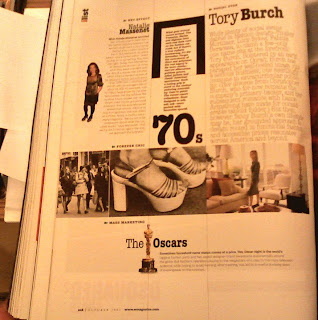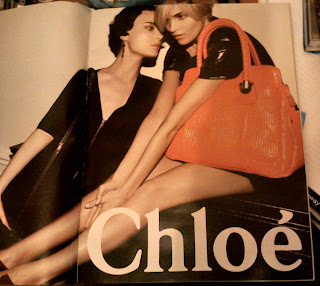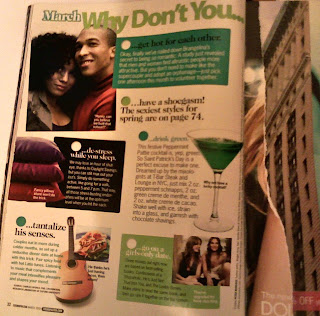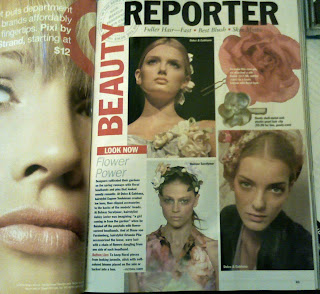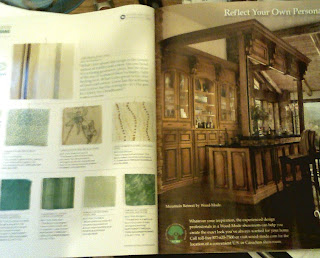Sunday, May 31, 2009
Wednesday, May 13, 2009
Friday, May 8, 2009
Wednesday, May 6, 2009
I started out by just grabbing all the magazines I could find that were appealing to me. Then I narrowed it down a bit, and decided to pick out three different types of magazines, which ended up being: Fashion (Vouge, Allure, W) Music (Interview, Rolling Stone) and Home (House Beautiful). I really wanted to design my magazine layouts after the fashion magazines, but I had a hard time finding many good layouts. They seemed to mostly rely on the photography, which would be cool, but I don’t want to necessarily depend on myself taking pictures of that quality. I actually found some of the best spreads in the House Beautiful magazine. They used a lot of nice grids and had good image and text relationships. Vouge liked to keep things simple, by having really large fashionable images, and plain text put into rows, often times putting emphasis on the beginning letters of paragraphs by enlarging the font size and changing the color. I did find a few fashion spreads that caught my eye though, and I really want to incorporate those ones into my own layout. The music magazines had relatively simple layouts as well, simple column and row style, but again with the really intricate images. I really want to think about color schemes, because in all of the fashion magazines, something I noticed that was continuous, was the bright eye catching colors that stood out against the simple text.
As far as my designing career goes, I really want to work designing albums, and music and fashion magazines, and so I thought it would be a good opportunity to get some real practice on. So basically I just want to do something fun and funky, with a hint of elegance, somehow figuring out how to design an appropriate fashion magazine layout along the way.





















